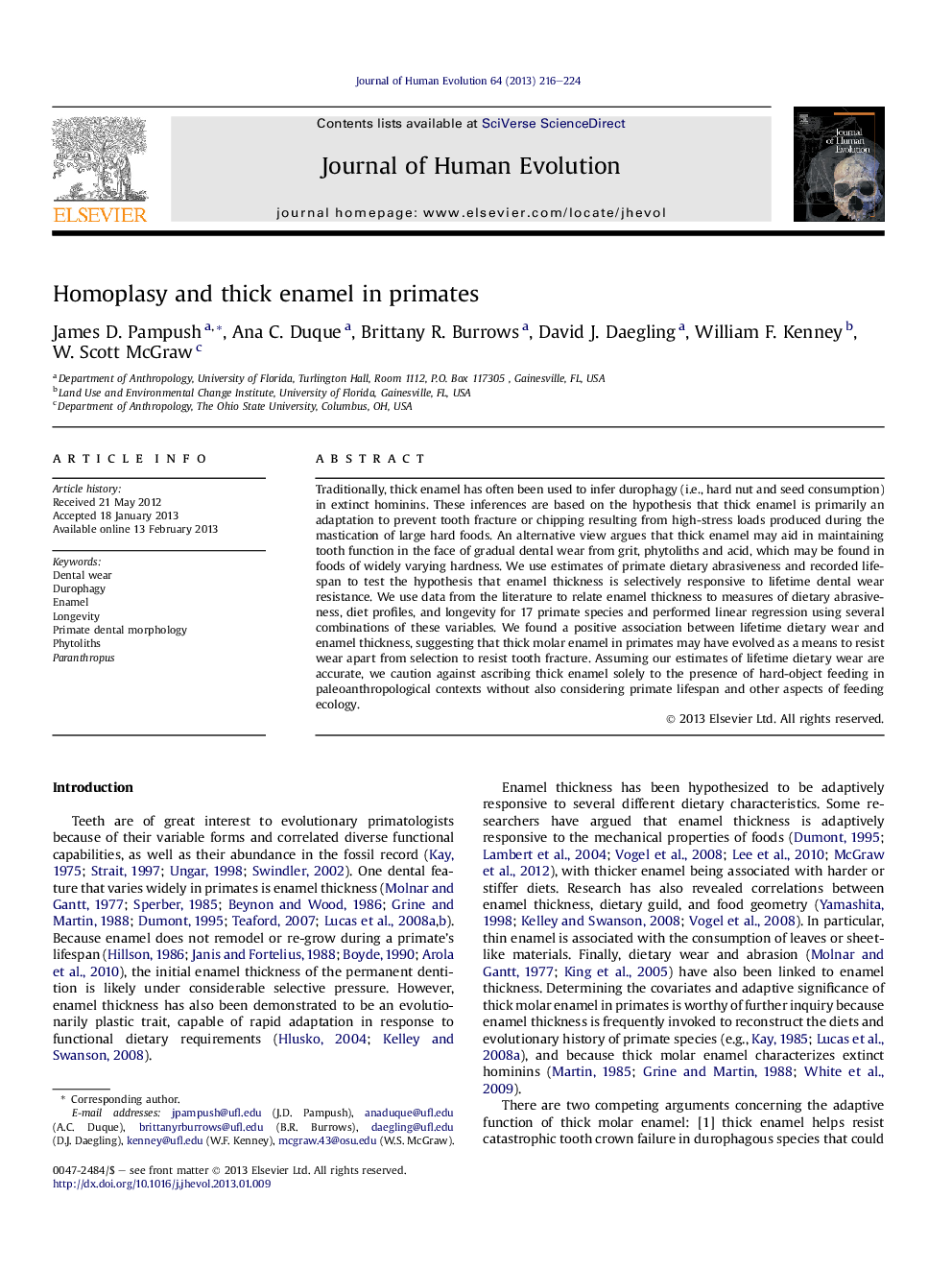| کد مقاله | کد نشریه | سال انتشار | مقاله انگلیسی | نسخه تمام متن |
|---|---|---|---|---|
| 4556246 | 1329465 | 2013 | 9 صفحه PDF | دانلود رایگان |

Traditionally, thick enamel has often been used to infer durophagy (i.e., hard nut and seed consumption) in extinct hominins. These inferences are based on the hypothesis that thick enamel is primarily an adaptation to prevent tooth fracture or chipping resulting from high-stress loads produced during the mastication of large hard foods. An alternative view argues that thick enamel may aid in maintaining tooth function in the face of gradual dental wear from grit, phytoliths and acid, which may be found in foods of widely varying hardness. We use estimates of primate dietary abrasiveness and recorded lifespan to test the hypothesis that enamel thickness is selectively responsive to lifetime dental wear resistance. We use data from the literature to relate enamel thickness to measures of dietary abrasiveness, diet profiles, and longevity for 17 primate species and performed linear regression using several combinations of these variables. We found a positive association between lifetime dietary wear and enamel thickness, suggesting that thick molar enamel in primates may have evolved as a means to resist wear apart from selection to resist tooth fracture. Assuming our estimates of lifetime dietary wear are accurate, we caution against ascribing thick enamel solely to the presence of hard-object feeding in paleoanthropological contexts without also considering primate lifespan and other aspects of feeding ecology.
Journal: Journal of Human Evolution - Volume 64, Issue 3, March 2013, Pages 216–224